LINA members operate across a range of business structures. This means they will have different levels of complexity, reporting requirements, legal obligations, and responsibility attached. When choosing a business structure for a startup, or assessing whether to change business structures, it’s important to have a solid understanding of the differences of each. We’ve compiled the following information from business.gov.au to give an overview of the available options.
Note that these options are for-profit; we’ll have a guide on the available not-for-profit structures available soon.
- Choosing a business structure
- Sole Trader
- Company
- Partnership
- Trust
- Co-operative
- Indigenous Corporation
- Joint Venture
Use the tabs to explore the key features of each business structure. This information is sourced from the Commonwealth of Australia under a Creative Commons Attribution 3.0 Australia licence.
For more information and additional resources, visit business.gov.au.
A sole trader is the simplest form of business structure and is relatively easy and inexpensive to set up.
As a sole trader you’re legally responsible for all aspects of your business including any debts and losses and day-to-day business decisions.
Key elements of a sole trader
If you’re looking at starting your business as a sole trader, consider the following key elements. A sole trader business structure:
- is simple to set up and operate
- gives you full control of your assets and business decisions
- requires fewer reporting requirements and is generally a low-cost structure
- allows you to use your individual tax file number (TFN) to lodge tax returns
- doesn’t require a separate business bank account, although this is recommended to make it easier to keep track of your business income and expenses
- requires you to keep financial records for at least 5 years
- has unlimited liability and all your personal assets are at risk if things go wrong
- doesn’t allow you to split business profits or losses made with family members
- makes you personally liable to pay tax on all the income derived
You can employ people to help run your business under the sole trader business structure.
If you do decide to take on any employees there are obligations you must comply with such as workers’ compensation insurance and superannuation contributions.
You can choose whether you pay super to yourself. You don’t have to make super contributions to a super fund for yourself, however it is a good idea. You may want to consider super as a way of saving for your retirement.
A company business structure is a separate legal entity, unlike a sole trader or a partnership structure. This means the company has the same rights as a natural person and can incur debt, sue and be sued.
As a member you’re not liable (in your capacity as a member) for the company’s debts. Your only financial obligation is to pay the company any amount unpaid on your shares if you are called on to do so. However, directors of the company may be held personally liable if found to be in breach of their legal obligations.
Companies are expensive and complicated to set up, and generally suit people who expect their business income to be highly variable, and want the option to use losses to offset future profits.
Key elements of a company
There are key elements you should know if you’re looking at starting your business as a company.
A company:
- is a separate legal entity
- is a more complex business structure to start and run
- involves higher set up and running costs than other structures
- requires you to understand and comply with all obligations under the Corporations Act 2001- external site
- means that business operations are controlled by directors and owned by the shareholders
- means company members have limited liability
- means the money the business earns belongs to the company
- requires an annual company tax return to be lodged with the Australian Taxation Office (ATO)
- requires you to complete an annual review and pay an annual review fee
- directors are required to complete a declaration of solvency each year
- means wider access to capital
- directors are required to have a director ID- external site.
Tax and legal obligations
Your company must register for goods and services tax (GST) if your turnover is $75,000 or more. The registration threshold for non-profit organisations is $150,000. The ATO has more detailed information on your tax obligations as a company.
Companies and directors have key legal and reporting obligations they must comply with. Some of the more common obligations include:
- update Australian Securities and Investments Commission (ASIC) within 28 days of key changes to company details
- keep financial records
- understand and comply with all your obligations as a director
A partnership is a business structure made up of 2 or more people who distribute income or losses between themselves.
There are 3 main types of partnerships:
- General partnership (GP) – is where all partners are equally responsible for the management of the business, and each has unlimited liability for the debts and obligations it may incur.
- Limited partnership (LP) – is made up of general partners whose liability is limited to the amount of money they have contributed to the partnership. Limited partners are usually passive investors who don’t play any role in the day-to-day management of the business.
- Incorporated Limited Partnership (ILP) – is where partners in an ILP can have limited liability for the debts of the business. However under an ILP there must be at least one general partner with unlimited liability. If the business cannot meet its obligations, the general partner (or partners) become personally liable for the shortfall.
Key elements of partnerships
If you’re looking at setting up a partnership structure consider the following key elements.
A partnership business structure:
- are relatively easy and inexpensive to set up
- have minimal reporting requirements
- require separate tax file numbers (TFN)
- must apply for an Australian business number (ABN) and use it for all business dealings
- share control and management of the business
- don’t pay income tax on the income earned – each partner pays tax on the share of the net partnership income each receives
- require a partnership tax return to be lodged with the Australian Taxation Office (ATO) each year
- require each partner to be responsible for their own superannuation arrangements
- must register for GST if turnover is $75,000 or more
Partnership laws
Individual states and territories govern partnership laws.
Read the partnership laws in your state or territory:
- ACT – Partnership Act 1963- external site
- NSW – Partnership Act 1892- external site
- NT – Partnership Act 1997- external site
- QLD – Partnership Act 1891- external site
- SA – Partnership Act 1891- external site
- TAS – Partnership Act 1891- external site
- VIC – Partnership Act 1958- external site
- WA – Partnership Act 1895
In a trust structure, a trustee holds your business for the benefit of others (the beneficiaries).
A trustee can be a person or a company, and is responsible for everything in the trust, including income and losses.
Trust structures are expensive and complicated to set up, and are generally used to protect the business assets for beneficiaries. The trustee decides how business profits should be distributed to the beneficiaries.
Trusts are complex to set up and you’ll need time and the right skills to do it properly. It’s best to see a qualified, licensed professional to help you understand what’s involved and the registrations you’ll need.
Key elements of a trust
If you want to set up a trust, keep in mind that trust structures:
- can be expensive to set-up and operate
- require a formal trust deed that outlines how the trust operates
- require the trustee to undertake formal yearly administrative tasks
- assets are protected
- can be difficult to dissolve or make changes once established
If you operate your business as a trust, the trustee is legally responsible for its operations. A trustee of a trust can be a company, providing some asset protection.
A co-operative structure is a legally incorporated entity designed to serve the interests of its members. Co-operatives carry on businesses in all sectors and they may be profit sharing enterprises or non-profit organisations. They serve their members by providing goods and services that may be unavailable or too costly to access as individuals. They share costs and carry on their enterprise under principles of:
- non-discrimination
- democracy
- independence
- education and care for communities.
Generally, all members are expected to use or contribute to their co-operative and have an equal say in the running of the organisation. Co-operatives are subject to state and territory legislation the Co-operatives National Law.
Types of co-operatives
There are two types of co-operatives:
- Distributing co-operatives: can distribute any annual profits to members. A distributing co-operative must have share capital and members must own the minimum number of shares specified in the co-op rules
- Non-distributing co-operatives: can’t share profits with members. All profits must further the co-operative’s purpose. It may or may not issue any shares to members. If the co-operative does not have share capital it usually charges members a regular subscription fee. For taxation purposes, non-distributing co-operatives meet the ‘not for profit’ definition.
Key elements of co-operative
There are key elements you should know if you’re looking at starting your business as a co-operative:
- a minimum of 5 members is required
- they are governed by a board of directors that is elected by the members
- all members must maintain an active relationship with their co-operative by using or contributing to its main activities
- all active members have an equal vote at general meetings regardless of their shareholding
- co-operatives are limited liability entities, meaning that members have no direct responsibility for debts of the co-operative
- directors of the co-operative owe legal duties to the co-operative and under the law that may lead to prosecution and compensation if they are negligent, reckless or fraudulent in carrying out their responsibilities
- co-operatives are formed to provide services to their members rather than to maximise a financial return on investment
- members are rewarded by having access to less costly or better goods and services, these rewards may be in the form of rebates, or for distributing co-operatives, there may be limited dividends on their shares
- anyone who can comply with a co-operative’s rules can apply to be a member, with the directors making decisions about the suitability of applicants
- members, other than directors, can be under 18, though these members cannot stand for office and do not have the right to vote
Types of members
All co-operative members must be active, the types of members include:
- Customer-owned co-operative: members jointly purchase goods and services, improving value for money and access to expert advice.
- Worker-owned co-operative: members of a worker co-operative are the employees of the co-operative and the co-operative provides work for its members.
- Producer-owned co-operative: smaller businesses can group together in producer-owned co-operatives to share supply chain costs and reach markets.
- Multi-stakeholder co-operative: formally allow for governance by representatives of two or more stakeholder groups within the same organisation.
Indigenous business owners can register as an Indigenous corporation through the Office of the Registrar of Indigenous Corporations (ORIC)- external site. Indigenous corporations are eligible for additional benefits.
An Indigenous-controlled group may become incorporated to:
- support the education and housing needs of Aboriginal and Torres Strait Islanders
- secure land
- seek greater recognition for Aboriginals and Torres Strait Islanders
- provide legal assistance to Aboriginals and Torres Strait Islanders
- develop Aboriginal and Torres Strait Islander infrastructure
- promote art, performance or music.
How to register
You will need to follow the steps to register your business as an Indigenous corporation. The steps include:
- Identify your members.
- Create a rule book.
- Hold a meeting of members.
- Consider any exemptions you may need.
- Lodge your application.
A joint venture is 2 or more people, companies or organisations who work together for specific purpose or project, rather than as an ongoing business. You may decide to enter into a joint venture agreement for short and long-term projects, such as to:
- research and development
- create a new product
- provide a new service
- expand markets.
Each of the participants in the joint venture is responsible for profits, losses, and costs associated with it. However, the venture is its own entity, separate from the participants’ other business interests.
Benefits of a joint venture
The benefits include:
- businesses of any size can enter into a joint venture agreement
- it is a temporary arrangement
- can help you grow your business
- the opportunity to collaborate and combine resources or expertise
- save money.
What is a joint venture agreement?
A joint venture agreement is a legally binding agreement that governs the relationship between the people or companies in the joint venture.
Some of the inclusions of joint venture agreement are:
- the structure, governance and obligations
- financial contributions
- division of profits and losses
- ownership of intellectual property (IP)
- disagreement or dispute resolution process
- leave or termination of the agreement.
Before you enter into a joint venture agreement, it is important to seek legal advice.
| Sole Trader | Partnership | Company | Trust | |
|---|---|---|---|---|
| Cost | Low | Medium | Medium to high | High |
| Complexity of setting up | Simple | Moderate | Complex | Highly complex |
| Tax obligations | Low | Low | Medium | High |
| Legal obligations | Low | Low to medium | High | Medium |
| Owner | You | You and your partners | Company shareholders | Trustee |
| Responsibility for business decisions | You | You and your partners share | The director(s) | Trustee |
| Responsibility for debts or losses | You | You and your partners share | Generally, the company | Trustee |
| Separate bank account needed | No | Yes | Yes | Yes |
| Extra administration and reporting | No | Yes | Yes | Yes |


